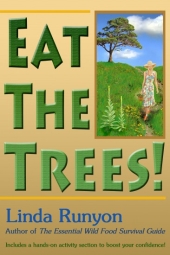




Apparently, people have made pinebark candy, and of course, tea from the needles--but there is another thread for that.the brown outer layer and hung the strips of white inner bark under the eaves of their barns to dry. If food was plentiful the next winter, this bark was fed to their dogs and cattle, and was reported to be very fattening, but if other foods were scarce, the Lapps would grind this dried bark and make a famine bread of it, which was very nutritious, but, to Linnaeus's taste, not very palatable.

www.thehappypermaculturalist.wordpress.com




that's from wikiA French maritime pine bark extract of OPCs, Pycnogenol, has been shown to improve microcirculation, retinal edema and visual acuity in the early stages of diabetic retinopathy.[31] Further study has shown that Pycnogenol maintains antioxidant and anti-inflammatory properties, selectively binds to collagen and elastin in the body, and aids in the production of endothelial[32] nitric oxide. Pycnogenol has also been shown to help normalize blood glucose (sugar) levels,[33] and delay sugar absorption.[34]




find religion! church
kiva! hyvä! iloinen! pikkumaatila
get stung! beehives
be hospitable! host-a-hive
be antisocial! facespace




yukkuri kame wrote:
So it's worthwhile as a medicine, but considering the damage you do to a tree in harvesting the inner bark, I wouldn't plan on using it as a major food source, unless I had an overgrown forest that needed thinning, or I was cutting trees for some sort of building project - or both.
www.thehappypermaculturalist.wordpress.com





Suzy Bean wrote:
yukkuri kame wrote:
So it's worthwhile as a medicine, but considering the damage you do to a tree in harvesting the inner bark, I wouldn't plan on using it as a major food source, unless I had an overgrown forest that needed thinning, or I was cutting trees for some sort of building project - or both.
You are right, it might do damage to the tree. After watching Paul's pine youtube though, I thought maybe it was even beneficial to bring down some doug firs.
find religion! church
kiva! hyvä! iloinen! pikkumaatila
get stung! beehives
be hospitable! host-a-hive
be antisocial! facespace




tel jetson wrote:
it is also my understanding that Finnish beer is traditionally filtered through juniper branches during sparging. adds a mild and very nice flavor. I don't know how many brewers still do this, but the examples I've had were lovely. certainly worth trying for the curious home brewer. I believe it also has some preservative effects on the beer.
www.thehappypermaculturalist.wordpress.com












